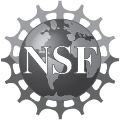Topics
- Resonance
- Harmonic Motion
- Oscillator
Description
For advanced undergraduate students: Observe resonance in a collection of driven, damped harmonic oscillators. Vary the driving frequency and amplitude, the damping constant, and the mass and spring constant of each resonator. Notice the long-lived transients when damping is small, and observe the phase change for resonators above and below resonance.
Sample Learning Goals
- Explain the conditions required for resonance.
- Identify/explain the variables that affect the natural frequency of a mass-spring system.
- Explain the distinction between the driving frequency and natural frequency of a resonator.
- Explain the distinction between transient and steady-state behavior in a driven system.
- Identify which variables affect the duration of the transient behavior.
- Recognize the phase relationship between the driving frequency and the natural frequency, especially how the phase is different above and below resonance.
- Give examples the application of real-world systems to which the understanding of resonance should be applied and explain why.












